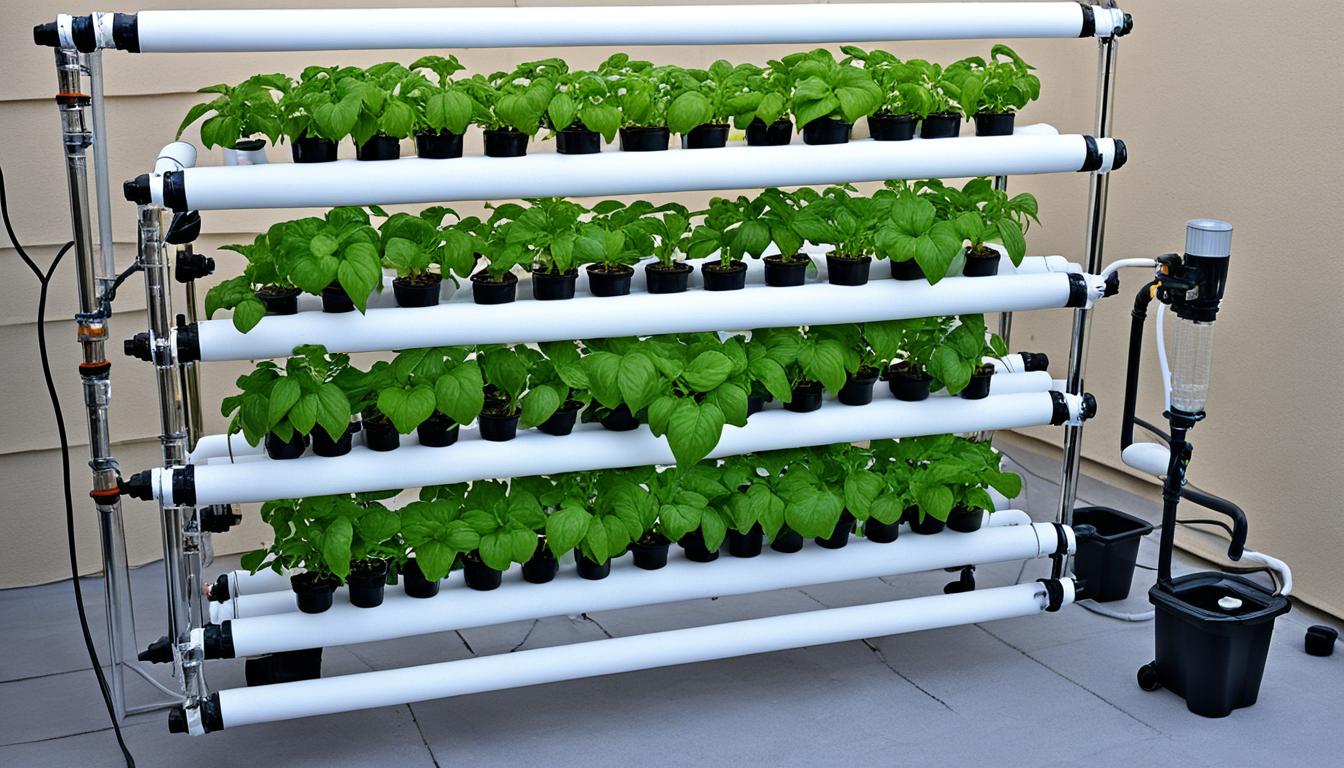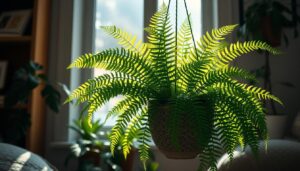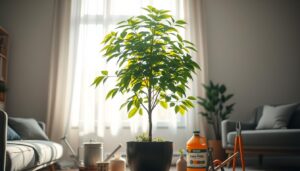Ever wondered how to grow lush, thriving plants without a speck of soil? Welcome to the world of hydroponic gardening! This soil-free method is changing how we grow plants, especially for those living in urban spaces. But can you really create a thriving garden without traditional soil?
Hydroponic gardening at home is perfect for plant lovers, no matter the space. It lets you grow plants using only water and nutrients. Whether you’re in a small apartment or a big house, a DIY hydroponic garden can turn any spot into a green oasis.
Starting a beginner hydroponic system might seem hard, but it’s easier than you think. With the right help, you’ll be growing fresh produce quickly. Plus, you’ll get more yields and can grow plants all year.
Ready to start your own DIY hydroponic garden? Let’s look at how you can grow plants like a pro, without needing a green thumb!
Key Takeaways
- Hydroponic gardening allows plant growth without soil
- It’s ideal for small spaces and indoor environments
- DIY hydroponic gardens can yield faster growth and higher harvests
- Beginner systems include wick, water culture, and ebb and flow
- You can grow a variety of plants, from herbs to vegetables
- Hydroponics offers year-round growing possibilities
Understanding Hydroponic Gardening Basics
Hydroponic gardening is a new way to grow plants without soil. It’s popular with both experts and beginners. Let’s explore easy hydroponics for beginners and its basics.
What is hydroponic gardening?
Hydroponic gardening means growing plants in a water solution full of nutrients, not soil. This method feeds plants directly, making them grow faster and produce more. Many people enjoy starting their soilless gardening with a homemade setup.
Benefits of growing plants without soil
Soilless gardening has many benefits:
- Increased crop yields
- Efficient use of space
- Water conservation
- Year-round growing capability
- Reduced pest and disease issues
Types of hydroponic systems for beginners
There are several hydroponic systems for beginners:
- Wick System: Great for small plants
- Deep Water Culture: Ideal for leafy greens and herbs
- Ebb and Flow: Versatile for many plant types
These systems are simple and effective, perfect for those new to hydroponics.
“Hydroponic gardening lets you grow fresh produce all year, even in small spaces. It’s a big change for city folks and garden lovers alike.”
Starting with hydroponic gardening might cost more at first than traditional gardening. But the long-term benefits are often worth it. With a homemade setup, you’ll soon enjoy the fresh produce of your efforts.
Essential Components of a DIY Hydroponic Garden
Starting your indoor hydroponic garden DIY project means getting the right supplies. Let’s look at the main things you’ll need for your garden to grow.
Your hydroponic setup starts with a reservoir tank. This tank holds the nutrient-rich water that feeds your plants. Then, you’ll need growing containers or net pots for your plants. These containers let roots get water and nutrients while giving support.
A growing medium is key for your plants’ roots. You can choose from:
- Perlite
- Vermiculite
- Hydroton (clay pebbles)
The nutrient solution is the core of your system. It has all the essential elements plants need to grow well. An air pump and air stones are important for adding oxygen to the water, helping roots grow strong.
For the best growing conditions, get a pH testing kit and adjusters. These tools help you keep the nutrient solution balanced for better nutrient uptake.
Grow lights are a must for indoor setups. They give the right light spectrum and intensity for photosynthesis, like natural sunlight.
“A well-designed hydroponic system can produce up to 30% greater yields than traditional soil-based methods.”
For beginners, a Deep Water Culture (DWC) system is a good start. It’s easy to set up and keep up, perfect for your first hydroponic garden. With these key supplies, you’re all set to begin your soilless gardening journey.
Choosing the Right Plants for Your Hydroponic Setup
Picking the right plants is crucial for hydroponic gardening success. The right hydroponic vegetables and herbs can make your indoor garden great. Let’s look at top picks for beginners and tips for advanced growers.
Best vegetables for hydroponic beginners
Begin with leafy greens for your hydroponic start. These plants are simple to grow and need little space or care.
- Lettuce
- Spinach
- Swiss chard
- Kale
Herbs that thrive in hydroponic systems
Herbs are great for indoor gardens. They grow fast and can be picked often, adding fresh taste to your dishes.
| Herb | Growth Rate | Harvest Frequency |
|---|---|---|
| Basil | Fast | Weekly |
| Parsley | Medium | Bi-weekly |
| Oregano | Slow | Monthly |
| Cilantro | Fast | Weekly |
| Mint | Fast | Weekly |
Considerations for fruiting plants
With more experience, try growing fruiting plants. They need more space and care but can be very rewarding.
- Tomatoes: Need vertical support and extra nutrients
- Strawberries: Prefer cooler temperatures
- Hot peppers: Require good light and warmth
Make sure your plants fit your hydroponic setup. Start small and grow your garden as you learn. You can add more types of crops over time.
Setting Up Your First Hydroponic System
Are you ready to start your DIY hydroponic setup? Let’s get into the steps to assemble your hydroponic system. With a few easy steps, you’ll have your garden ready in no time.
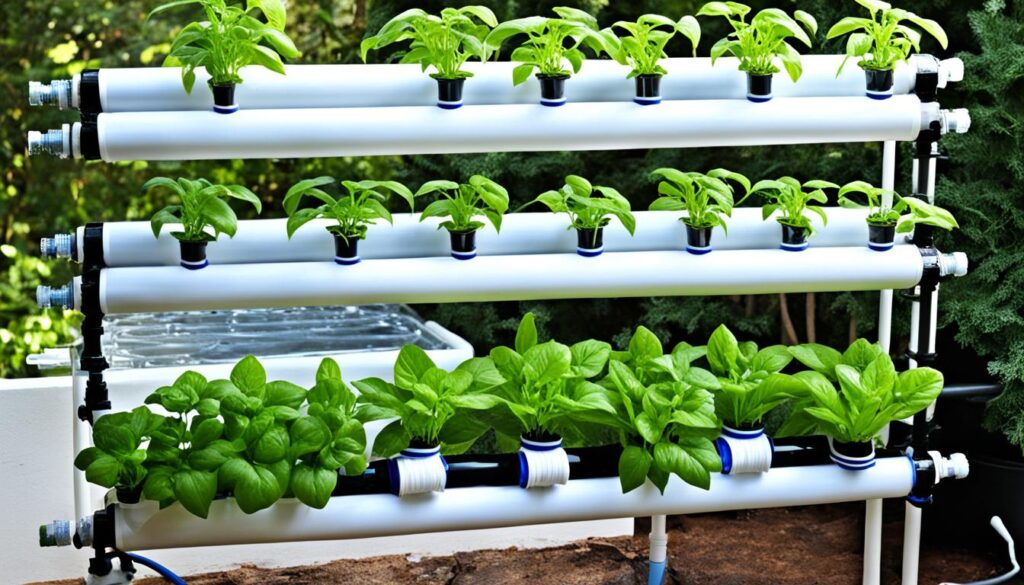
First, pick a stable spot for your reservoir tank. This is the base of your system. Then, place your growing containers on the tank’s lid. Fill them with a good growing medium like rockwool or clay pebbles.
Getting the nutrient solution right is important. Follow the instructions from the manufacturer closely. Once it’s ready, pour it into the reservoir. Don’t forget to add air stones in the tank and connect them to an air pump. This makes sure your plants’ roots get enough oxygen.
Keeping the pH balanced is crucial in hydroponics. Adjust the nutrient solution’s pH to be between 5.5 and 6.5 for the best plant growth. Use a pH testing kit and adjusters as needed.
Now, it’s time to add your plants! Carefully put them in net pots and place these in the growing medium. Finally, start the air pump and nutrient circulation pump.
| Step | Action | Importance |
|---|---|---|
| 1 | Set up reservoir | Foundation of system |
| 2 | Prepare growing containers | Plant support |
| 3 | Mix nutrient solution | Plant nourishment |
| 4 | Install aeration system | Root oxygenation |
| 5 | Adjust pH | Nutrient absorption |
| 6 | Add plants | Start growing |
Congratulations! You’ve set up your DIY hydroponic system. With the right care, you’ll soon enjoy fresh, homegrown produce.
Nutrient Solutions and pH Balance for Hydroponic Success
Mastering nutrient solutions and pH balance is key to a thriving hydroponic garden. These elements work together to make sure your plants get what they need.
Understanding hydroponic nutrients
A hydroponic nutrient solution has all the essential elements plants need to grow. Unlike soil, where nutrients are found naturally, you must provide them directly to the plants in hydroponics.
For beginners, a one-part nutrient solution is best. These solutions are pre-mixed and easy to use. As you get more experience, you can try two-part or three-part solutions.
Importance of pH in hydroponics
The pH balance in hydroponics is key for nutrient absorption. Plants absorb nutrients best in a pH range of 5.5 to 6.5 for most crops.
How to measure and adjust pH levels
To keep the right pH balance:
- Use a digital pH meter to check your solution often
- If the pH is too high, add pH down solution
- If it’s too low, use pH up solution
- Make small adjustments and retest until you reach the desired range
| pH Range | Plant Nutrient Availability |
|---|---|
| Below 5.5 | Poor, risk of nutrient lockout |
| 5.5 – 6.5 | Optimal for most plants |
| Above 6.5 | Reduced, some nutrients become insoluble |
Remember to change your hydroponic nutrient solution every two to three weeks. This keeps nutrient levels optimal and prevents salt buildup. With the right care, your plants will do great in their soilless setup.
Lighting Requirements for Indoor Hydroponic Gardens
Proper lighting is key for indoor hydroponic gardens. Your plants need the right amount and type of light to grow well. Let’s look at the basics of grow lights for hydroponics and how to set up good indoor lighting.
LED and fluorescent lights are top picks for hydroponics. They save energy and don’t get as hot as old-style bulbs. When picking grow lights, think about cost, strength, color spectrum, and how big the area is.
Putting your lights in the right spot is important. For LED lights, keep them 6 inches from your plants. Fluorescent lights should be 12 inches away. Incandescent bulbs should be 24 inches away to avoid burning your plants with heat.
Most hydroponic plants need 14-16 hours of light every day. Use a timer to keep a steady light schedule. This makes sure your plants get enough rest.
| Light Type | Distance from Plants | Pros | Cons |
|---|---|---|---|
| LED | 6 inches | Energy-efficient, low heat | Higher upfront cost |
| Fluorescent | 12 inches | Affordable, great for leafy greens | Less intense for fruiting plants |
| Incandescent | 24 inches | Inexpensive, easy to find | High heat, not as efficient |
By knowing these lighting basics, you’re ready to make a great space for your indoor hydroponic garden. Remember, different plants need different lights. Adjust as you learn more.
Maintaining Your DIY Hydroponic Garden
Keeping your hydroponic garden in top shape is key for a great harvest. Let’s look at important maintenance tips to help your plants grow well.
Regular System Checks and Cleaning
Check your hydroponic system every week to spot problems early. Clean pumps, filters, and reservoirs every month to stop algae and clogs. Use a diluted hydrogen peroxide solution to keep everything clean.
Monitoring Plant Health
Watch your plants closely for any signs of trouble. Look out for:
- Leaf discoloration or spotting
- Wilting or drooping stems
- Stunted growth
- Root discoloration
These signs might mean you need to fix nutrient levels or fight pests. Adjust your feeding or treat for pests as needed.
Troubleshooting Common Issues
Common hydroponic problems include:
| Issue | Solution |
|---|---|
| Nutrient imbalance | Adjust nutrient solution strength |
| Algae growth | Reduce light exposure to water |
| Root rot | Increase oxygenation in reservoir |
| Pest infestation | Use organic pest control methods |
By being alert and fixing problems fast, you’ll have a thriving hydroponic garden all year.
Harvesting and Enjoying Your Hydroponic Produce
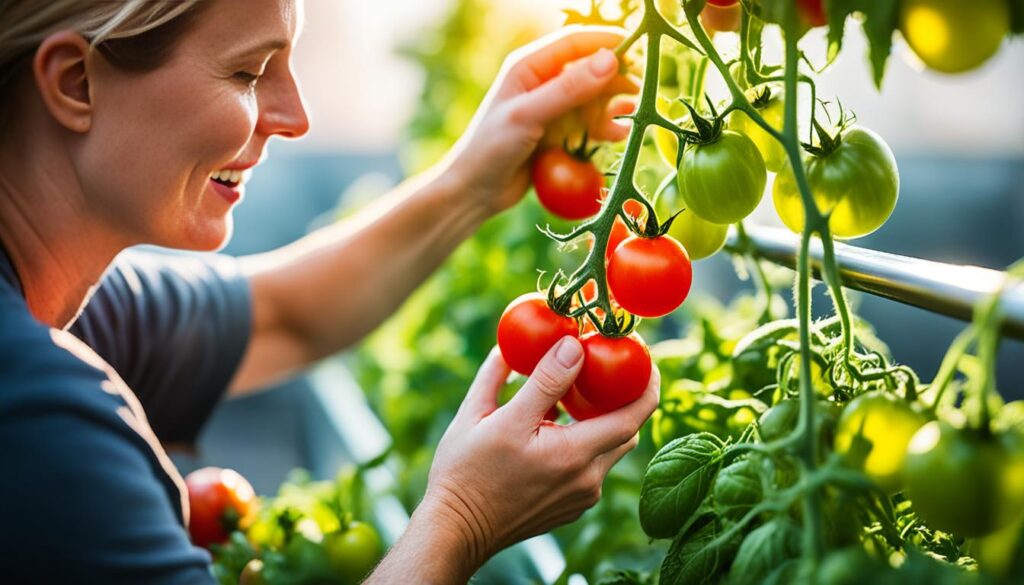
The moment you’ve been waiting for has arrived – it’s time to harvest your hydroponic garden! Harvesting from a hydroponic garden is thrilling, giving you fresh, tasty produce. The amount you get will depend on the plants you grow. But with the right care, you can enjoy a lot of harvests all year.
For leafy greens and herbs, start picking when they’re big enough for you. Cut off the outer leaves to let the plant keep growing. For fruits like tomatoes or peppers, wait until they’re fully ripe before picking. Hydroponic plants grow faster than those in soil, so watch them closely.
To keep your plants healthy and keep getting produce, follow these tips:
- Use clean, sharp tools to avoid damaging plants
- Harvest in the morning when plants are most hydrated
- Remove any diseased or yellowing leaves promptly
- For herbs, harvest before they flower for best flavor
After harvesting, your hydroponic produce is ready to eat! Hydroponic fruits and vegetables often taste better than store-bought ones. Add your harvest to salads, sandwiches, or your favorite dishes. With the right care and harvesting methods, your hydroponic garden will give you a steady supply of nutritious, homegrown food all year.
Expanding Your Hydroponic Garden: Advanced Techniques
Ready to take your hydroponic garden to the next level? Advanced hydroponics offers exciting opportunities to enhance your growing experience. As you gain confidence, consider these hydroponic system upgrades to boost productivity and expand your gardening horizons.
Explore complex systems like Nutrient Film Technique (NFT) or aeroponics. These methods provide superior nutrient delivery and oxygenation, resulting in faster growth and higher yields. Vertical gardening is another space-efficient option, perfect for maximizing your growing area.
Automation tools can revolutionize your hydroponic setup. pH and EC controllers ensure precise nutrient management, freeing up your time and improving plant health. Try growing a wider variety of plants, including fruiting vegetables and flowering species, to diversify your hydroponic garden.
| Advanced Technique | Benefits | Difficulty Level |
|---|---|---|
| NFT System | Efficient nutrient delivery, space-saving | Moderate |
| Aeroponics | Faster growth, higher yields | High |
| Vertical Gardening | Space-efficient, increased yield per square foot | Low to Moderate |
| Automation Tools | Precise control, time-saving | Moderate |
Implement sustainable practices to enhance the eco-friendliness of your setup. Consider integrating rainwater collection systems or solar-powered pumps. These upgrades not only reduce your environmental impact but can also lead to long-term cost savings.
Conclusion
Hydroponic gardening opens up new possibilities for city folks and plant lovers. It brings fast growth and more produce. You can have fresh food all year, even in small spaces.
Starting hydroponic gardening is easy for beginners. Begin with a simple Deep Water Culture system and easy plants. As you get better, you can try more complex methods and grow more.
Good planning and regular care are crucial for a successful hydroponic garden. With hard work and attention, you’ll see great results. Whether you want to grow herbs, veggies, or fruits, hydroponic gardening is rewarding and fun at home.
FAQ
What is hydroponic gardening?
Hydroponic gardening grows plants without soil. It uses a water solution full of nutrients instead. Plants sit in a medium like perlite or vermiculite, with their roots in the nutrient solution.
What are the benefits of hydroponic gardening?
Hydroponics offers fast growth, high yields, and saves water. It’s also great for saving space and growing plants all year, even indoors.
What types of hydroponic systems are suitable for beginners?
Beginners can start with wick systems, water culture (lettuce raft), or ebb and flow systems. These are easy to set up and keep up.
What are the essential components of a DIY hydroponic garden?
You’ll need a reservoir tank, growing containers, and a growing medium like perlite or vermiculite. Don’t forget the nutrient solution, air pump, air stones, pH kit, pH adjusters, and grow lights for indoors.
What plants are best for beginners in a hydroponic garden?
Start with leafy greens like lettuce and spinach. Herbs such as basil and mint are also great for beginners. With more space and experience, you can grow fruits like tomatoes and strawberries.
How do you set up a basic hydroponic system?
Begin by placing the reservoir tank in a stable spot. Then, put growing containers on the tank’s lid and fill them with medium. Prepare the nutrient solution and add air stones with the air pump.
Adjust the pH, put plants in net pots, and start the air and nutrient pumps.
What is the importance of pH in hydroponic gardening?
Keeping the pH right (5.5 to 6.5) is key for plants to get nutrients well in hydroponics. Wrong pH can cause nutrient problems or toxicity.
What type of lighting is best for indoor hydroponic gardens?
LED or fluorescent grow lights work well for indoor hydroponics because they’re efficient and don’t get too hot. It’s important to get the light right for plant growth.
How can I maintain a healthy hydroponic garden?
Keep your system clean to stop algae and clogs. Check on plant health and fix any nutrient issues or pests quickly.
When should I harvest my hydroponic plants?
Harvest times vary by plant type. Leafy greens and herbs are ready when they’re big enough. Fruiting plants are ripe when they’re fully grown. Harvesting right keeps plants healthy and keeps them producing.
Source Links
- https://www.thespruce.com/beginners-guide-to-hydroponics-1939215 – Learn the Basics of Hydroponics: The Most Efficient Gardening Method
- https://www.nosoilsolutions.com/7-steps-starting-hydroponic-garden/ – How To Start A Hydroponic Garden In 7 Steps – NoSoilSolutions
- https://www.greeneryretail.com/post/hydroponic-gardening-for-beginners – A Comprehensive Guide to Hydroponic Gardening for Beginners


